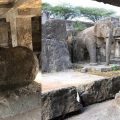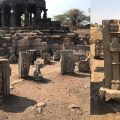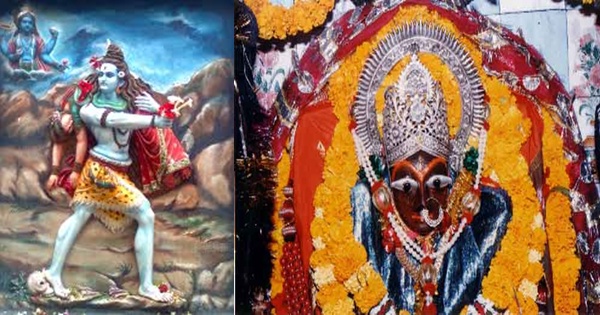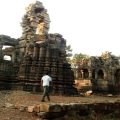Pandav Fall and Caves! Raneh Canyons!! Until we explored these two places in Panna including Maihar and Khajuraho, we never knew Madhya Pradesh was so rich in heritage with Nature draped in her best!
It was a mid-September morning. Only three days ago we had set out for the holy city of Maihar from Ghaziabad, by road. Thanks to our Mahindra Thar! I and my husband Yogaditya Singh Rawal drove in turns, covering the distance of 756 km in 15 hours. Halts at few places for refreshment and craggy roads gobbled our reaching time by three hours.

It was a divine experience visiting Maa Sharda’s shrine at Trikuta Hill, Maihar, climbing 1063 steps barefoot. The next day we drove to Khajuraho covering a distance of 136 km. Our visit to the UNESCO World Heritage Site of temples dating back to the 6th, 10th and 11th centuries left us enthralled. Such was the brilliance and finery of the sculptures and artwork!
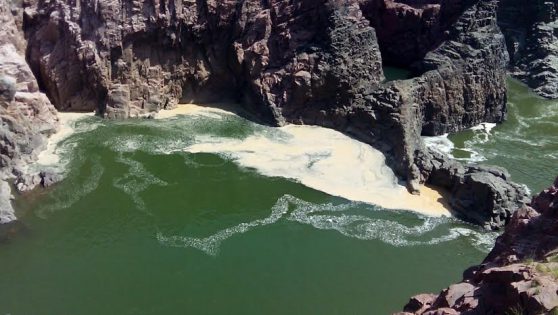
We had included Panna Tiger Reserve in our sight seeing itinerary. Our key objective was to catch a glimpse of the tigers there. The reception guy of our hotel in Khajuraho enlightened us that we could take our Thar into the jungle against an additional fare.
On learning that the tigers would remain in hiding, we decided not to explore wildlife in this 5th Tiger Reserve in Madhya Pradesh and 22nd in India.
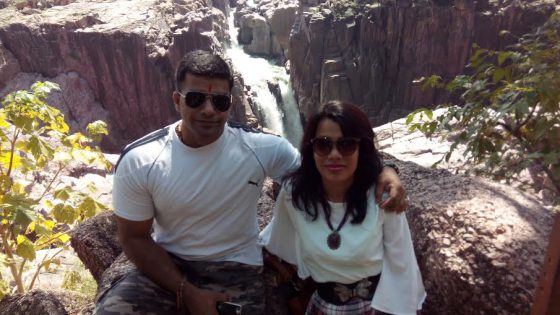
This National Park hosts around 14 tigers. Though we knew that this Reserve was awarded by the Ministry of Tourism of India in 2007 as the best maintained wildlife park, we resisted. We had visited numerous wildlife tiger parks to catch a glimpse of the wild cat but in vain.
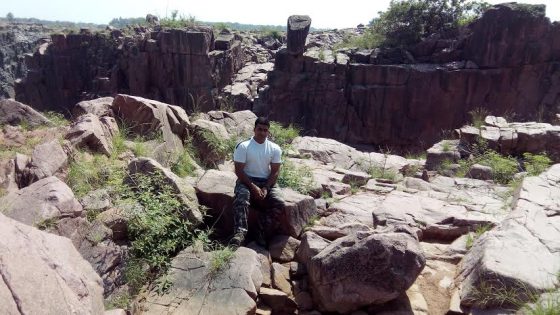
In the precincts of the Panna Tiger Reserve are two sightseeing destinations – Raneh Falls and Pandav Fall and Caves. Wildlife tour by the forest department is excluded here. We decided to visit both.
And we set out for Raneh Falls. The GPS took us along a desolate uneven boulevard with dense bushes on either side.
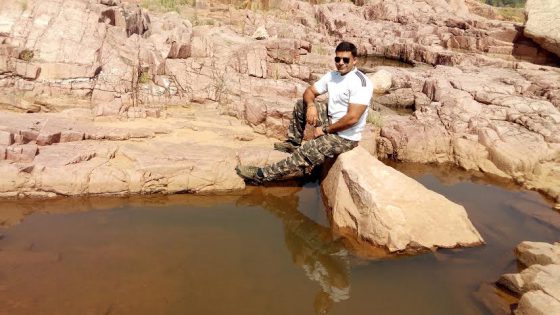
Tiny wild flowers in bloom were a bliss to watch as we sped along at an average speed of 25 km per hour. A tiny stream on the way compelled us to stop. Few lotus flowers in bloom with few in the budding stage and the spreading green cover of leaves on the water were a delight to our senses.
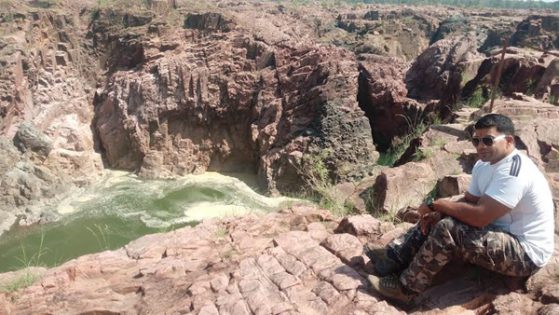
After a short while, we resumed our drive. The GPS signaled that we were near to our destination. We looked around for the waterfall. Trees and bushes blurred our vision. Suddenly, we caught a glimpse of rocks and green waters. Our joy knew no bounds. As we neared, the whole panorama came into view.
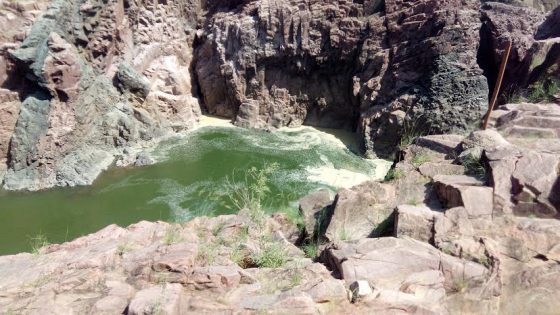
The landscape changed out of the blue! Such a pleasant surprise! It was a 20 km drive from our hotel in Khajuraho. A government registered guide approached us. We hired him. We parked our Thar at the parking lot.
A splendid waterfall caught our attention as we walked towards the site. The reverberation of the waterfall condensed all other sounds. Its resonance shipped us to an altogether different world where sparkling waters and rocky terrain created a little paradise on earth. Tiny waterfalls nearby further dolled up the scenic environ.
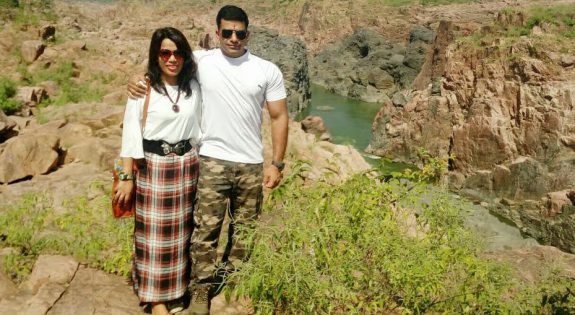
The Ken River has formed a canyon as deep as 98 feet, flowing along a 5 km narrow stretch. Our guide narrated that the waterfalls looked grandiose during the rainy season and the sound of waters falling below echoed across several kilometers. He requested us to revisit Raneh Falls during the rainy season.
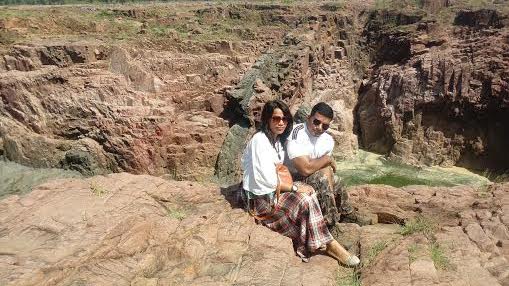
I never knew igneous rocks looked that spectacular! The narrow gorge of igneous rocks with the Ken River flowing through it was a feast for the eyes. Pure crystalline granite and dolomite in variegated shades of colors enveloped the area. While at few places the color of the rocks looked pink, at few places they looked red and grey.
It seemed Nature in her rock form was changing her colors like the chameleon. We walked around the site, got few photographs clicked, and visited the gharial museum.
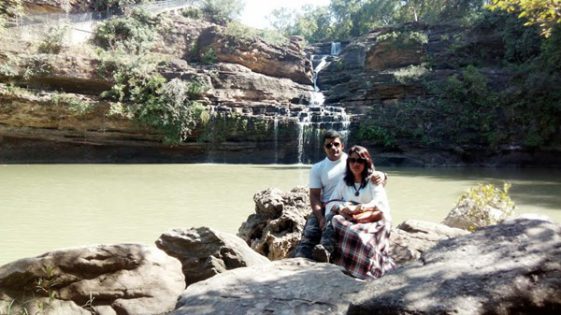
From here, we set out for Pandav Caves and Waterfall. Both of us felt excited to visit a place where the Pandav brothers along with Draupadi hid in the caves during their exile. We wondered how they traversed hundreds of kilometers on foot to reach this spot.
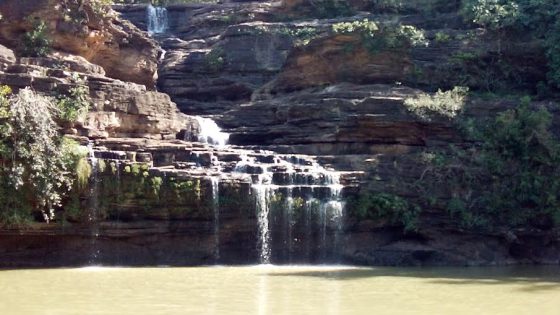
The hilly area with twists and turns every now and then and a green cover all around kept us elated. The air was fresh; we opened the window on both sides to let the breeze kiss us. A 15 km drive and we reached our destination. Bravo to our GPS!
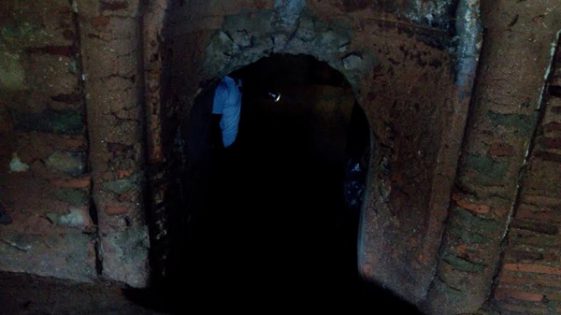
At the parking lot, we hired a government registered guide. A stairway led us to the waterfall spot where a tiny lake and caves awaited to welcome us. Like the Raneh Falls, the landscape changed out of the blue!
I had visited several caves few years back – Elephanta Caves in Mumbai, Karla Caves in Khandala, Ajanta and Ellora Caves in Aurangabad, all crowned with rich history and heritage. And this cave has a history to tell too.
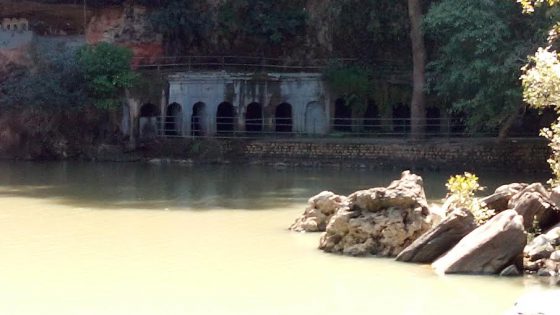
The waterfall looked marvelous. At a height of 98 feet and located on a tributary of the Ken River, the Pandav Fall is surrounded by a green cover on all sides. The waterfall forms a pool below with caves on one side. Water from the pool flows through rocky boulders into the tributary of the Ken River.
As we rested ourselves in one of the boulders posing for a photograph, we felt as if we did not exist in this world, but beyond where only bliss prevailed.
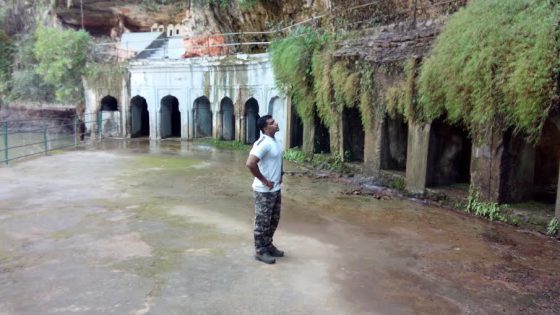
The caves looked pre-historic. Pandav Caves transported us to the Mahabharat era dating back to 5000 plus years! And we recalled the story once again, as we explored. Going by Shakuni’s plan, Duryodhan was instrumental in succumbing Yudhisthir to a challenge in the game of dice.
A novice in the game, Yudhisthir lost his kingdom. He, along with his brothers and Draupadi, were forced into exile for 13 years, which included one year in anonymity.

Even during their exile, Duryodhan devised ways to eliminate them, but in vain. The Pandavs changed their whereabouts constantly so that none could find them. And they reached here where they stayed for quite some time before relocating to another site.
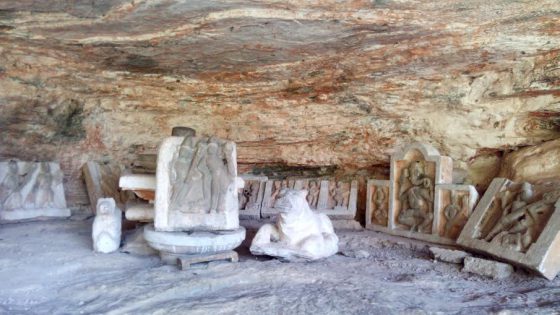
As we entered the caves, water dripped from the above from the rocks, welcoming us. It felt like unseen divine hands sprinkling the holy Ganga water on us! The guide asked us to switch on our mobile phone lights as it was dark inside. We followed his advice.
And there we were, inside the place where once the Pandavs and Draupadi rested! We felt ecstatic from deep within!
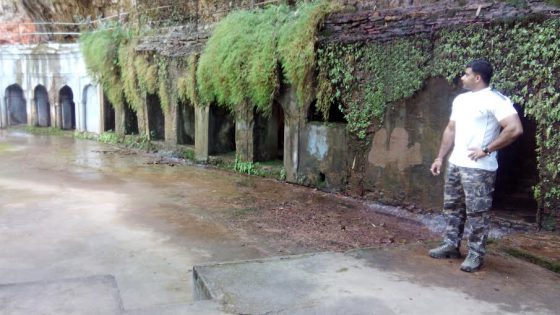
One of the extensions of the caves is associated with the Indian Freedom Struggle. Chandrasekhar Azad stayed in hiding here with his followers where they peacefully devised plans to revolt against the British.
Water dripped from the falling roots of trees from the exterior walls of the rocky caves. Our guide said that the water, which flowed 24 hours irrespective of all seasons, had medicinal properties. We drank, quenching our thirst and filled our water bottle to its full.
And our visit was over! It was an exhilarating and invigorating experience for both of us. It was only past noon and we wanted to explore more. While searching on Google, we chanced to bump into Ajaigarh Fort, which was only 26 km from Pandav Caves and Waterfall.
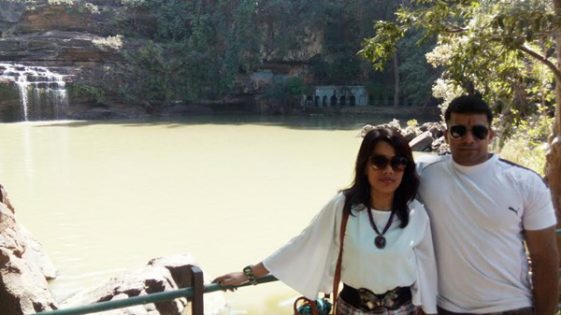
We set out with our Thar towards Ajaigarh Fort. The GPS, our constant companion, showed us the way!
Click to read my travelogues on Maihar, Khajuraho, and Jhansi and take an informative visual tour of these three of the most visited places in India. Stay tuned to the ‘Travelogues’ section at myindiamyglory website for my travelogues on Ajaigarh Fort and Orchha.
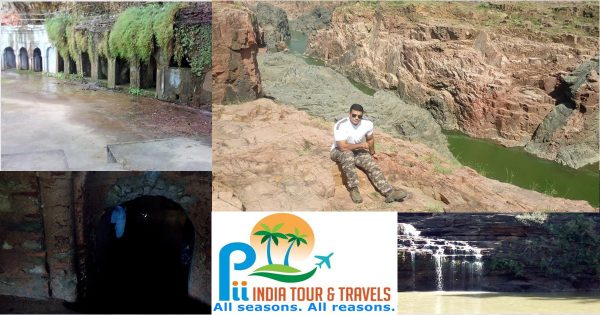
(Book your Panna tour with Pii India Tour and Travels. Best price guaranteed! Visit their Facebook Page for latest updates.)




